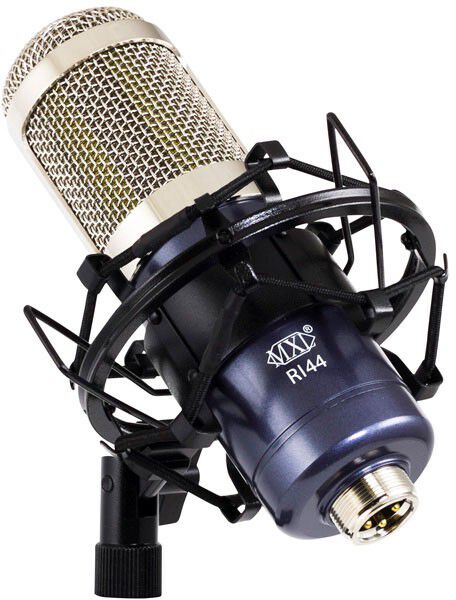The MXL R144 is an affordable ribbon microphone that provides the unique sound of ribbon microphone recordings from the jazz-age. While not suitable for all recordings, the R144’s warmth and smooth top-end provides a new sound character to diversify your microphone collection.
Sound Quality
Ribbon microphones are most known for their warm sound character. While they lack the detail of a condenser, ribbons usually have a smooth high-end that is desirable for certain vocal or instrumental recordings. The MXL R144 has all the hallmarks of a ribbon microphone, featuring a warm and smooth sound that is unique to a microphone of its kind.
The R144 suffers from a lacking low-end response. It’s also missing the high-end airiness that is popular for most vocal recording these days. That being said, the microphone provides a unique ribbon sound that provides an alternative to the condenser microphone.
The smooth top end cuts out the harshness that can be present in certain instruments when captured with other types of microphones. The R144 is great for getting a warm recording of guitars and guitar amplifiers, drum overheads, vocals, and bowed string instruments.

The R144 has a frequency response of 20Hz to 17kHz with boosts around 300Hz and 6kHz. As we mentioned above, the low-end is fairly weak, but the boosts in the frequency range provide a warm sound with presence. The microphone can handle SPLs of up to 130dB, meaning it can safely record guitar amplifiers and other high wind pressure recordings.
Like all ribbon microphones, the R144 has a low sensitivity and therefore needs a quality preamplifier with minimal operating noise. If you want an alternative to the airy and detailed sound of your condensers, the R144 is an affordable way to utilize the warmth of a traditional ribbon microphone.
Features & Design
The MXL R144 has a figure-eight pickup pattern, picking up signals equally from either side of the microphone and rejecting those from the sides. The response is nearly identical from either end of the microphone, and it does an excellent job of cancelling out sounds from the sides.
The figure-eight pickup pattern makes the R144 more versatile than a basic cardioid microphone, but it also makes isolating the sounds that are received more difficult. This microphone would not be the best choice if you were trying to capture a single vocal part while a band is playing simultaneously, as sounds will be picked up from both sides and it will be difficult isolate that vocal.
The MXL R144 features an attractive casing, but like most ribbon microphones it is susceptible to damage. In general, we recommend using a pop filter when recording any instrument with the R144, as it will protect the ribbon from any potential wind damage.
Conclusion
The MXL R144 is an affordable means to attain the unique sound of a ribbon microphone in your studio. Like all ribbon microphones it lacks the detail and airiness of a condenser, but the warmth and smooth high-end it provides can be the perfect fit for certain recordings.
We do not recommend the R144 if you are buying your first microphone, as its unique sound character is not desirable for many recordings. If you already own a number of microphones and you want to add a new sound to your collection, the R144 is a great option.